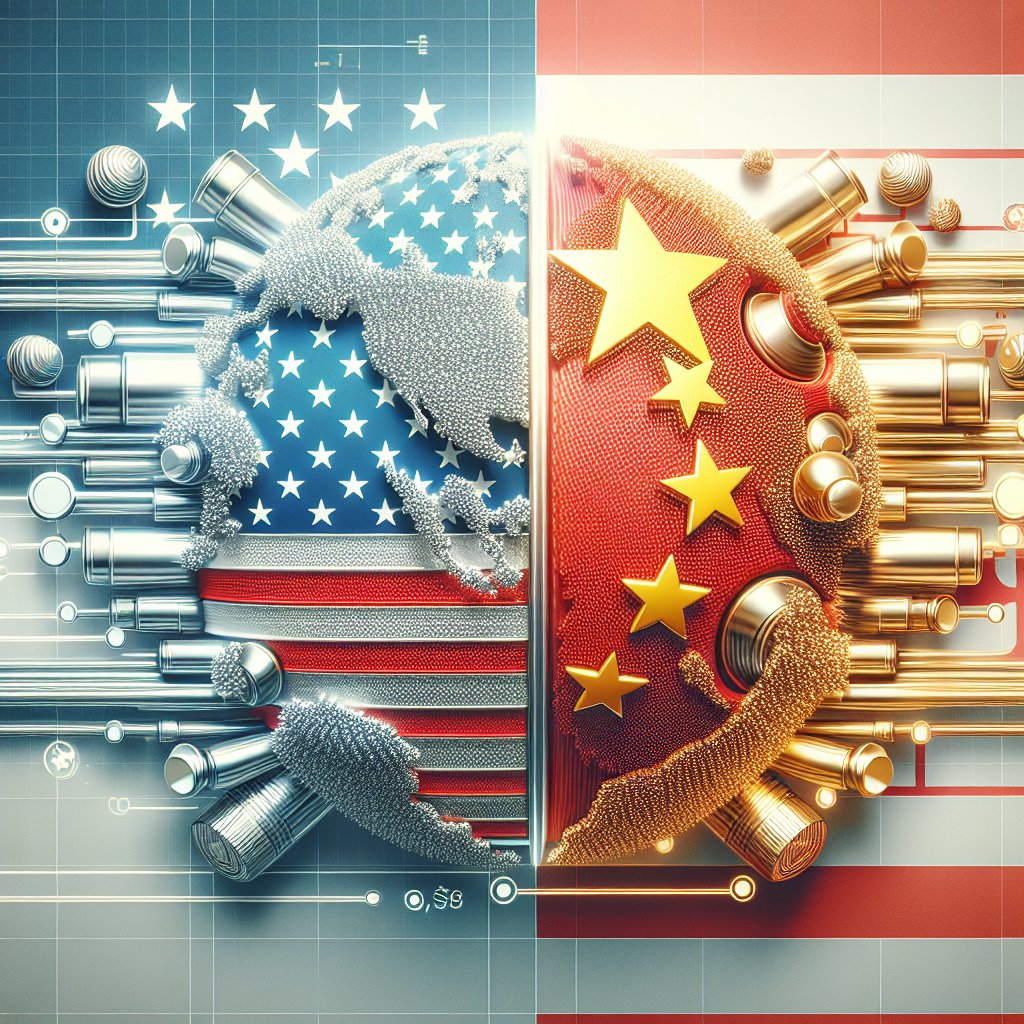The U.S. rare metals industry faces significant challenges as it seeks to compete with China’s dominant position in the global market. Rare metals, which include elements like lithium, cobalt, and rare earth elements, are crucial for a wide range of high-tech applications, from smartphones to electric vehicles and renewable energy technologies. As the demand for these materials continues to grow, the United States must navigate complex geopolitical, economic, and environmental factors to establish a competitive edge.
Understanding the Global Rare Metals Market
The global rare metals market is characterized by its complexity and strategic importance. Rare metals are essential components in the production of advanced technologies, making them critical to national security and economic development. China has long been the dominant player in this market, controlling a significant portion of the world’s supply chain for rare earth elements and other critical minerals. This dominance is due to a combination of factors, including China’s abundant natural resources, government support, and strategic investments in mining and processing infrastructure.
In contrast, the United States has historically relied on imports to meet its rare metals needs, which has left it vulnerable to supply chain disruptions and geopolitical tensions. The U.S. government has recognized the strategic importance of securing a domestic supply of rare metals and has taken steps to reduce dependence on foreign sources. This includes initiatives to promote domestic mining, processing, and recycling of critical minerals, as well as efforts to develop alternative materials and technologies that reduce reliance on rare metals.
Despite these efforts, the U.S. faces significant challenges in competing with China. The Chinese government has invested heavily in the rare metals industry, providing subsidies and other forms of support to domestic companies. This has allowed China to maintain a competitive advantage in terms of production costs and technological capabilities. Additionally, China’s control over the supply chain gives it significant leverage in the global market, allowing it to influence prices and availability of rare metals.
Challenges Facing the U.S. Rare Metals Industry
The U.S. rare metals industry faces several key challenges as it seeks to compete with China. One of the most significant challenges is the lack of a comprehensive domestic supply chain. While the U.S. has some rare metal resources, the mining and processing infrastructure is underdeveloped compared to China. This means that even if the U.S. can increase domestic production, it may still rely on foreign processing facilities, which can be a bottleneck in the supply chain.
Environmental and regulatory hurdles also pose significant challenges. Mining and processing rare metals can have substantial environmental impacts, and the U.S. has stringent environmental regulations that can slow down the development of new projects. Balancing the need for increased production with environmental protection is a complex issue that requires careful consideration and innovative solutions.
Another challenge is the need for technological innovation. The U.S. must invest in research and development to improve mining and processing technologies, making them more efficient and environmentally friendly. This includes developing new methods for extracting rare metals from unconventional sources, such as recycling electronic waste or extracting minerals from seawater. Additionally, the U.S. must explore alternative materials and technologies that can reduce reliance on rare metals, such as developing new battery chemistries for electric vehicles.
Strategies for Enhancing U.S. Competitiveness
To enhance its competitiveness in the global rare metals market, the U.S. must adopt a multi-faceted strategy that addresses both supply chain vulnerabilities and technological innovation. One key strategy is to strengthen domestic production capabilities by investing in mining and processing infrastructure. This includes providing financial incentives and regulatory support for new projects, as well as fostering partnerships between government, industry, and academia to drive innovation.
Another important strategy is to diversify supply sources by building strategic partnerships with other countries that have significant rare metal resources. This can help reduce dependence on China and create a more resilient supply chain. The U.S. can also work with international organizations to promote fair trade practices and ensure a level playing field in the global market.
Investing in research and development is crucial for maintaining a competitive edge. The U.S. should prioritize funding for projects that focus on improving extraction and processing technologies, as well as developing alternative materials and technologies. This includes supporting initiatives that promote recycling and the circular economy, which can help reduce the environmental impact of rare metal production and create new economic opportunities.
Finally, the U.S. must engage in strategic policy-making that aligns with its long-term goals for energy security, economic growth, and environmental sustainability. This includes developing a comprehensive national strategy for critical minerals that addresses both domestic and international challenges. By taking a proactive and coordinated approach, the U.S. can enhance its competitiveness in the global rare metals market and secure its position as a leader in the high-tech economy of the future.












